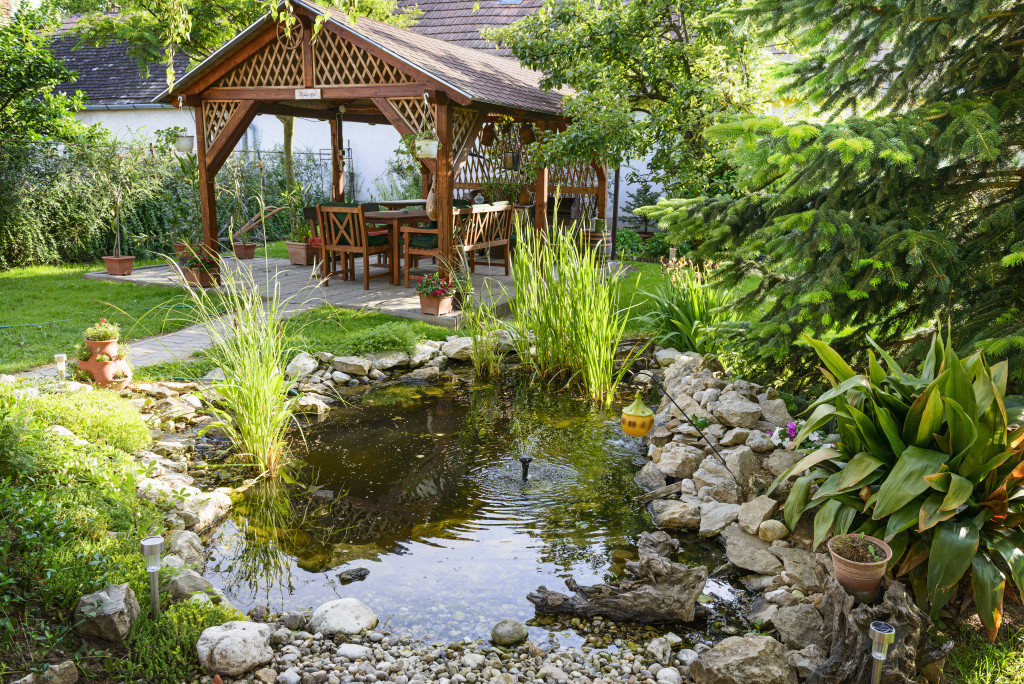Like most homeowners, you probably take great pride in your backyard. It’s a natural extension of your living space and a great place to relax and enjoy time with family and friends. When planning a major landscaping project, you must consider a few things before starting. Here are some tips to help you plan a successful backyard makeover.
1. Define your goals.
What do you want to achieve with your landscaping project? Do you want to create a relaxing retreat, an outdoor entertaining area, or add curb appeal to your home? Once you know what you want to accomplish, you can start planning your design. You should also consider the amount of time and money you’re willing to invest in the project.
When defining your goal, looking at pictures of landscaped yards for inspiration can be helpful. You can also talk to a landscape designer or contractor to get ideas. Try to be as specific as possible so that they can create a design that meets your needs. Include things like the type of plants you want, the desired hardscaping features, and any other special touches you have in mind.
2. Work with professional landscapers.
If you’re not experienced in landscaping, it’s best to work with professionals who can help you create the yard of your dreams. They will be able to consider the type of soil you have, the climate in your area, and your specific goals for the project. Landscape designers and contractors can also suggest the best plants and materials to use based on your budget and the amount of maintenance you’re willing to do.
You also want to ensure that you work with a company with all the equipment needed to make your vision a reality. For example, if you’re planning to install a new patio or deck, they should have mini excavators available to help with the heavy lifting. They should also have a staff of experienced professionals who can install everything from irrigation systems to sod.
3. Get permits and approvals.
Depending on the scope of your project, you may need to get permits from your city or county. For example, if you’re planning to install a pool, you’ll need a building permit. You may also need approval from your homeowner’s association if you have one.
When getting approvals, ask about any restrictions that may apply to your project. For example, there may be limits on the height of your deck or the type of material you can use for your patio. There may also be setback requirements that you need to take into account. If you’re not sure about the approval process, it’s best to consult with a professional.
4. Make a budget.
Landscaping can be very costly, so creating a budget is essential before starting. When making your budget, be sure to factor in the cost of materials, labor, and other associated costs. You may also want to set aside a contingency fund if there are unexpected costs.
If you’re working with a professional, get an estimate of the project’s total cost before making any commitments. Once you have a budget, you can start planning how you will finance the project. Always remember that you may need to adjust your budget as the project progresses. Try to be as flexible as possible without going way over budget.

5. Choose the right plants.
One of the essential aspects of landscaping is choosing the right plants. You need to consider the climate in your area, the amount of sun and shade your yard gets, and the type of soil you have. You also want to ensure that your chosen plants are compatible with any hardscaping features you plan to install.
When selecting plants, it’s also essential to consider their maintenance needs. Some plants require a lot of water and care, while others are drought-tolerant. Be sure to choose plants appropriate for your level of expertise and the amount of time you’re willing to spend caring for them. Ask a landscape designer or nursery for help if you’re unsure which plants to choose.
6. Find suitable materials.
Finally, the type of material you use for your landscaping project can significantly impact the overall look and feel of your yard. For example, natural stone pavers offer a more traditional look, while concrete or brick can give your yard a more modern feel. The material you choose should also be compatible with the type of plants you’ve selected.
For example, if you’re planning to install a water feature, you’ll need to use materials resistant to water damage. You’ll also want to ensure that the material you choose can withstand the weather conditions in your area. If you’re not sure what type of material to use, it’s best to consult with a professional.
Landscaping can be a big undertaking, but it’s worth the effort. By following these simple tips, you can create a beautiful and functional outdoor space that you and your family can enjoy for years. With some planning and patience, you can transform your yard into the envy of the neighborhood.

